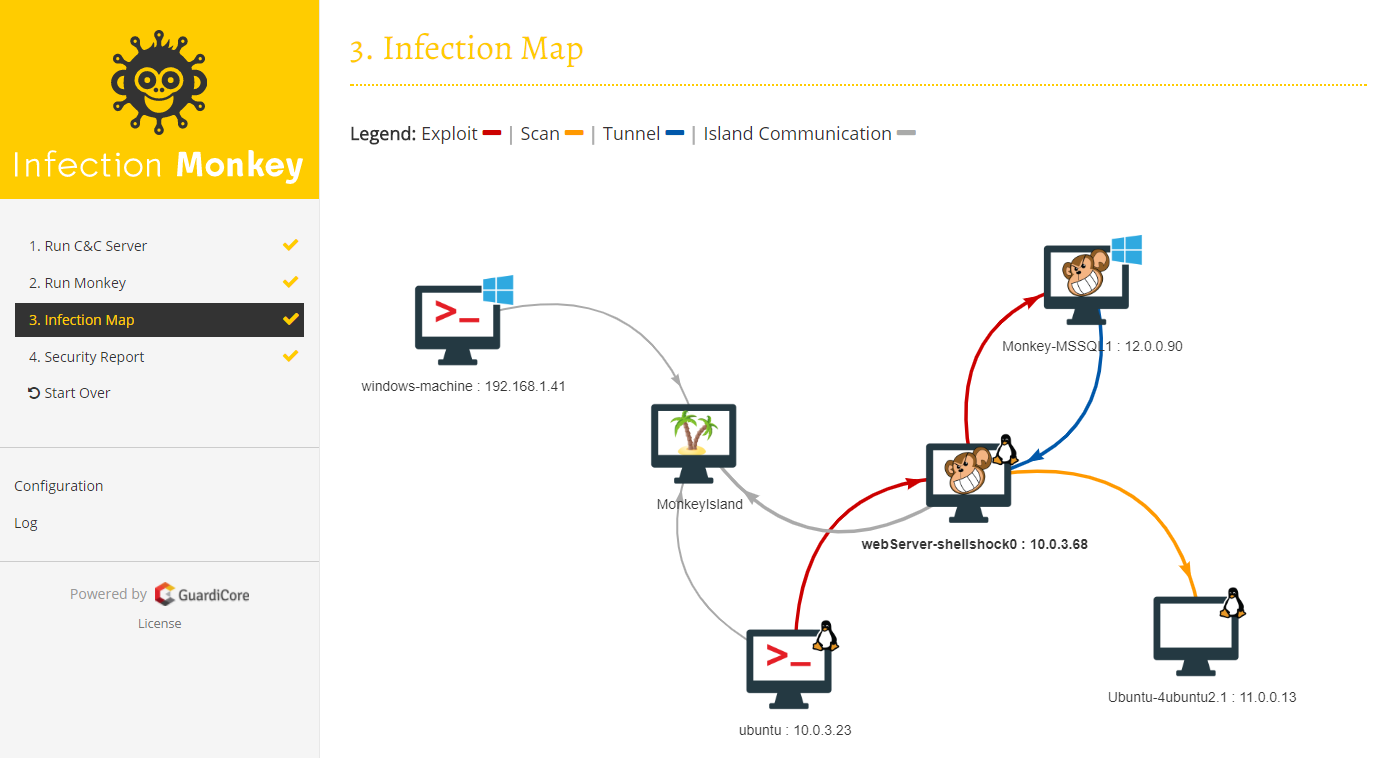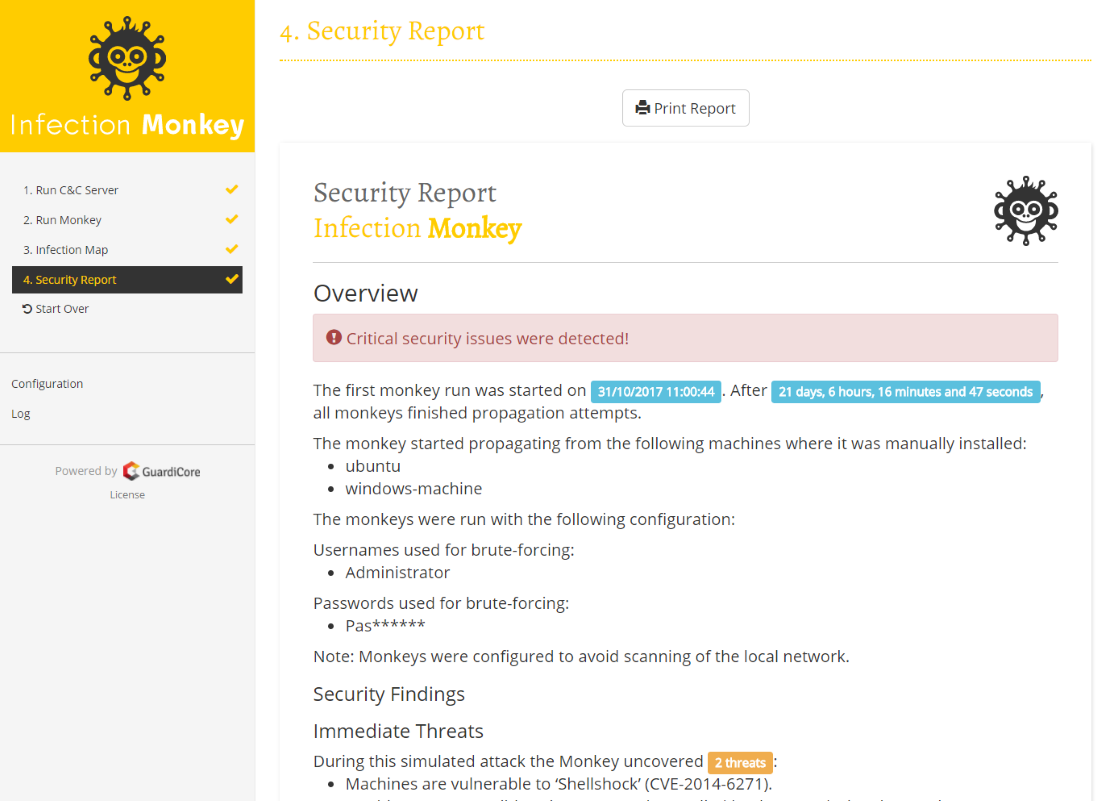* Changed the productARN to the monkey's ARN |
||
|---|---|---|
| .github | ||
| docker | ||
| monkey | ||
| .gitignore | ||
| .travis.yml | ||
| CONTRIBUTING.md | ||
| LICENSE | ||
| README.md | ||
README.md
Infection Monkey
Data center Security Testing Tool
Welcome to the Infection Monkey!
The Infection Monkey is an open source security tool for testing a data center's resiliency to perimeter breaches and internal server infection. The Monkey uses various methods to self propagate across a data center and reports success to a centralized Monkey Island server.


The Infection Monkey is comprised of two parts:
- Monkey - A tool which infects other machines and propagates to them
- Monkey Island - A dedicated server to control and visualize the Infection Monkey's progress inside the data center
To read more about the Monkey, visit http://infectionmonkey.com
Main Features
The Infection Monkey uses the following techniques and exploits to propagate to other machines.
- Multiple propagation techniques:
- Predefined passwords
- Common logical exploits
- Password stealing using Mimikatz
- Multiple exploit methods:
- SSH
- SMB
- RDP
- WMI
- Shellshock
- Conficker
- SambaCry
- Elastic Search (CVE-2015-1427)
Setup
Check out the Setup page in the Wiki or a quick getting started guide.
Building the Monkey from source
If you want to build the monkey from source, see Setup and follow the instructions at the readme files under infection_monkey and monkey_island.
License
Copyright (c) Guardicore Ltd
See the LICENSE file for license rights and limitations (GPLv3).